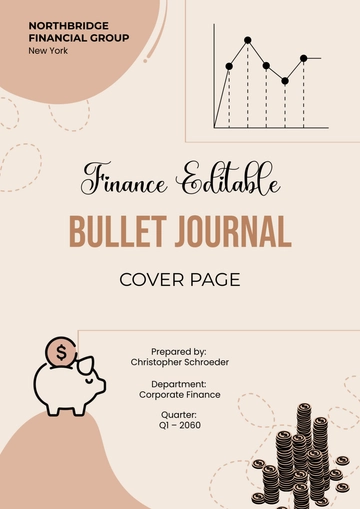Free Financial Compliance Review

This document presents the findings of the financial compliance review conducted for [Your Company Name] for the period [MM-DD-YYYY], to [MM-DD-YYYY]. The review aims to ensure adherence to financial laws, regulations, and internal policies, identifying areas of strength and concern, and providing actionable recommendations.
A. Introduction
The financial compliance review for [Your Company Name] focuses on evaluating the adherence to relevant financial regulations and internal policies during the first half of [Year]. The objective is to assess the effectiveness of current financial controls, identify any areas of non-compliance or risk, and recommend corrective actions.
B. Compliance Framework Overview
The compliance framework for [Your Company Name] is based on a comprehensive set of laws and regulations, including the Sarbanes-Oxley Act, GAAP principles, and IRS guidelines, among others. These regulations ensure that all financial reporting is accurate, reliable, and timely.
C. Methodology
The review was conducted through a series of audits, document reviews, and interviews with key personnel. We examined financial statements, transaction records, and compliance documentation to assess the effectiveness of internal controls and adherence to laws and regulations.
D. Findings & Observations
Compliance Status
In the compliance status section, the review detailed two major regulations and the company's adherence status:
Sarbanes-Oxley Act (Compliant): This indicates that the company's financial reporting processes, internal controls, and procedures meet the requirements set forth by the Sarbanes-Oxley Act. This compliance suggests that the company has effective oversight of financial reporting, adequate controls to prevent fraud, and a process for accurate financial disclosures.
IRS Guidelines (Non-Compliant): The company was found to be non-compliant with certain IRS guidelines, specifically in the timely filing of taxes. This non-compliance could result from inadequate internal processes or misunderstandings about filing deadlines or requirements. The non-compliance poses risks of penalties, fines, or additional scrutiny from tax authorities.
Key Strengths
Internal Controls: The company has established and maintained strong internal controls, particularly in transaction processing. This includes effective segregation of duties, which helps prevent errors and fraud by ensuring no single individual has control over all aspects of a financial transaction. Automated controls also contribute to efficiency and reduce the risk of human error.
Documentation: The review found that the financial documentation, including records of transactions, financial statements, and supporting documents, was generally accurate, complete, and well-organized. Good documentation practices are crucial for accurate financial reporting, compliance, and in case of audits or reviews by external parties.
Areas of Concern
IRS Guidelines: The primary concern identified was the late filing of taxes. This non-compliance can lead to various negative consequences, including fines, penalties, or increased interest on owed taxes. It can also harm the company's reputation and lead to increased scrutiny in future tax years.
E. Recommendations
Based on the findings and observations, the following recommendations were made to address areas of concern and improve overall compliance:
IRS Guidelines Non-Compliance:
Implement a robust tax calendar: Develop and adhere to a detailed tax calendar that includes all relevant filing deadlines, payment due dates, and preparatory milestones. This tool should be widely accessible and regularly updated to reflect any changes in tax law or company structure.
Assign clear responsibilities: Clearly delineate roles and responsibilities related to tax preparation and filing. Ensure that individuals or teams understand their tasks and deadlines and hold them accountable for timely completion.
Regular training and updates: Provide regular training and updates to the staff involved in tax preparation and filing to ensure they are aware of current laws, regulations, and company policies.
Improvement of Documentation Process:
Enhance digital documentation system: Upgrade or enhance the digital documentation system for better organization, quicker access, and improved security. This may involve adopting new technology or improving existing systems to ensure that financial records are well-maintained and easily retrievable.
Regular audits and cleanups: Conduct regular audits of the documentation system to ensure accuracy and completeness. Schedule periodic cleanups to remove outdated documents and organize existing records, making it easier to locate and review necessary documents.
By addressing these areas, the company can improve its compliance posture, reduce the risk of penalties or fines, and maintain a reputation for financial integrity and responsibility. These recommendations are not exhaustive but provide a starting point for addressing the specific issues identified during the review. Continuous monitoring and adaptation of strategies will be necessary to ensure ongoing compliance and improvement.
F. Conclusion
The financial compliance review has highlighted a solid foundation in internal controls and adherence to several key regulations. However, attention is required in the area of tax compliance to avoid future penalties. Continuous monitoring and improvement of financial controls are recommended to maintain compliance and integrity in financial reporting.
Prepared By: [Your Name]
Date: [MM-DD-YYYY]
- 100% Customizable, free editor
- Access 1 Million+ Templates, photo’s & graphics
- Download or share as a template
- Click and replace photos, graphics, text, backgrounds
- Resize, crop, AI write & more
- Access advanced editor
Maintain the highest standards of financial integrity with Template.net's Financial Compliance Review Template. This professional tool is both editable and customizable, allowing for meticulous compliance evaluations. Adapt it to your organization's needs for a thorough review process, ensuring adherence to all financial regulations and safeguarding your operations against compliance risks efficiently and effectively. Start editing the template using our Ai Editor Tool.





























